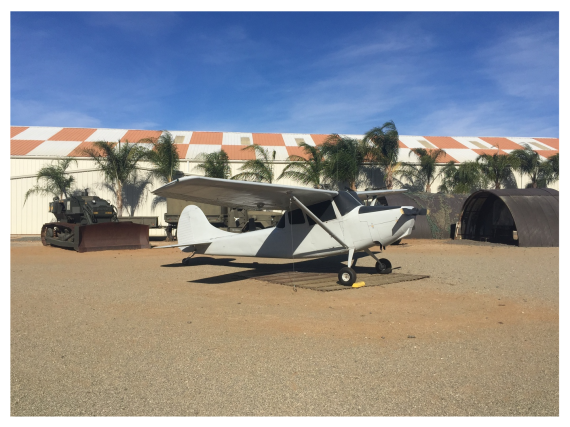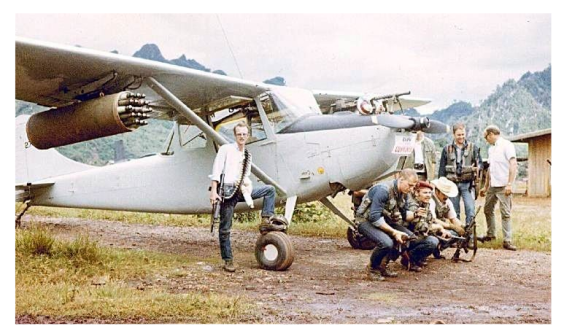O-1 Bird Dog
| Manufacturer: | Cessna | ||
| Designation: | O-1 | ||
| Version: | A | ||
| Nickname: | Bird Dog | ||
| Type: | Observation & Communication | ||
| Specifications | |||
|---|---|---|---|
| Length: | 25' 10" | ||
| Height: | 9' 2" | ||
| Wingspan: | 36' | ||
| Crew: | 2 | ||
| Propulsion | |||
| No. of Engines: | 1 | ||
| Powerplant: | Continental O-470 | ||
| Horsepower: | 213-hp | ||
| Performance | |||
| Max Speed: | 150 mph | ||
| Cruising Speed: | 115 mph | ||
| Service Ceiling: | 20,300' | ||
| Range: | 530 miles | ||
| Armament: | white phosphorus rockets | ||
In the aftermath of the Second World War, the United States Army sought to replace their light observation aircraft with a stronger and more capable design. Cessna Corporation modified their immensely popular Model C-170 to create the Cessna C-305 to meet the Army’s specifications. Originally designated the L-19A Bird Dog, the new aircraft had a high-wing, single engine, all metal design with tandem seats and excellent visibility. The increased visibility was achieved by angling the side windows, installing rear windows, and placing clear panels in the upper wing.
Re-designated as O-1A Bird Dogs in 1962, the aircraft were used by all U.S. services for a number of missions including liaison, forward air control, artillery spotting, and casualty evacuation. USAF O-1’s were used extensively in the early years of the conflict in Southeast Asia as forward air controllers tasked with the dangerous mission of locating and marking enemy targets before directing other aircraft in for the attack.
Slow and vulnerable to enemy fire 469 O-1 Bird Dogs were lost during the Vietnam War. This, along with its limited range and time over
target, led to its replacement first by the twin-engine O-2 Skymaster and later by the OV-10 Bronco.
On loan from the National Museum of the United States Air Force the museum’s O-1’s serial number and previous service remains a mystery. Likely constructed for the U.S. Army in the early 1950s, at
some point the aircraft was transferred to the USAF. With consideration to its undetermined history, the museum’s O-1 has been completed in the livery of the clandestine CIA/USAF
Ravens.
Initially operating out of bases in Laos, the Ravens were experienced USAF fighter pilots recruited through the “Steve Canyon Program” to provide FAC services during the secret war in Laos. Pilots selected for the program were processed through the 56th Special Operations Wing at Nakhon Phanom RTAFB, before being sent to the US Embassy in Vientiane, Laos. There they where they were stripped of all military identification and equipment and given false USAID (United States Agency for International Development) identification and civilian clothes before being deployed. Flying unmarked, or Laotian marked, aircraft with Laotian interpreters in the back, the Ravens flew some of the most dangerous missions of the war coordinating airstrikes for CIA operatives and the Laotian military.




